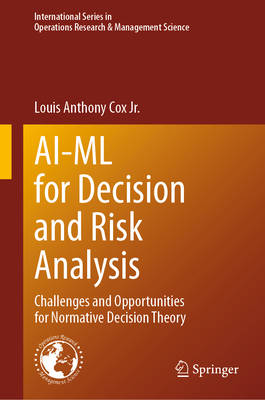
- Afhalen na 1 uur in een winkel met voorraad
- Gratis thuislevering in België vanaf € 30
- Ruim aanbod met 7 miljoen producten
- Afhalen na 1 uur in een winkel met voorraad
- Gratis thuislevering in België vanaf € 30
- Ruim aanbod met 7 miljoen producten
Ai-ML for Decision and Risk Analysis
Challenges and Opportunities for Normative Decision Theory
Louis Anthony Cox JrOmschrijving
This book explains and illustrates recent developments and advances in decision-making and risk analysis. It demonstrates how artificial intelligence (AI) and machine learning (ML) have not only benefitted from classical decision analysis concepts such as expected utility maximization but have also contributed to making normative decision theory more useful by forcing it to confront realistic complexities. These include skill acquisition, uncertain and time-consuming implementation of intended actions, open-world uncertainties about what might happen next and what consequences actions can have, and learning to cope effectively with uncertain and changing environments. The result is a more robust and implementable technology for AI/ML-assisted decision-making.
The book is intended to inform a wide audience in related applied areas and to provide a fun and stimulating resource for students, researchers, and academics in data science and AI-ML, decision analysis, and other closely linked academic fields. It will also appeal to managers, analysts, decision-makers, and policymakers in financial, health and safety, environmental, business, engineering, and security risk management.
Specificaties
Betrokkenen
- Auteur(s):
- Uitgeverij:
Inhoud
- Aantal bladzijden:
- 433
- Taal:
- Engels
- Reeks:
- Reeksnummer:
- nr. 345
Eigenschappen
- Productcode (EAN):
- 9783031320125
- Verschijningsdatum:
- 6/07/2023
- Uitvoering:
- Hardcover
- Formaat:
- Genaaid
- Afmetingen:
- 156 mm x 234 mm
- Gewicht:
- 816 g

Alleen bij Standaard Boekhandel
Beoordelingen
We publiceren alleen reviews die voldoen aan de voorwaarden voor reviews. Bekijk onze voorwaarden voor reviews.











